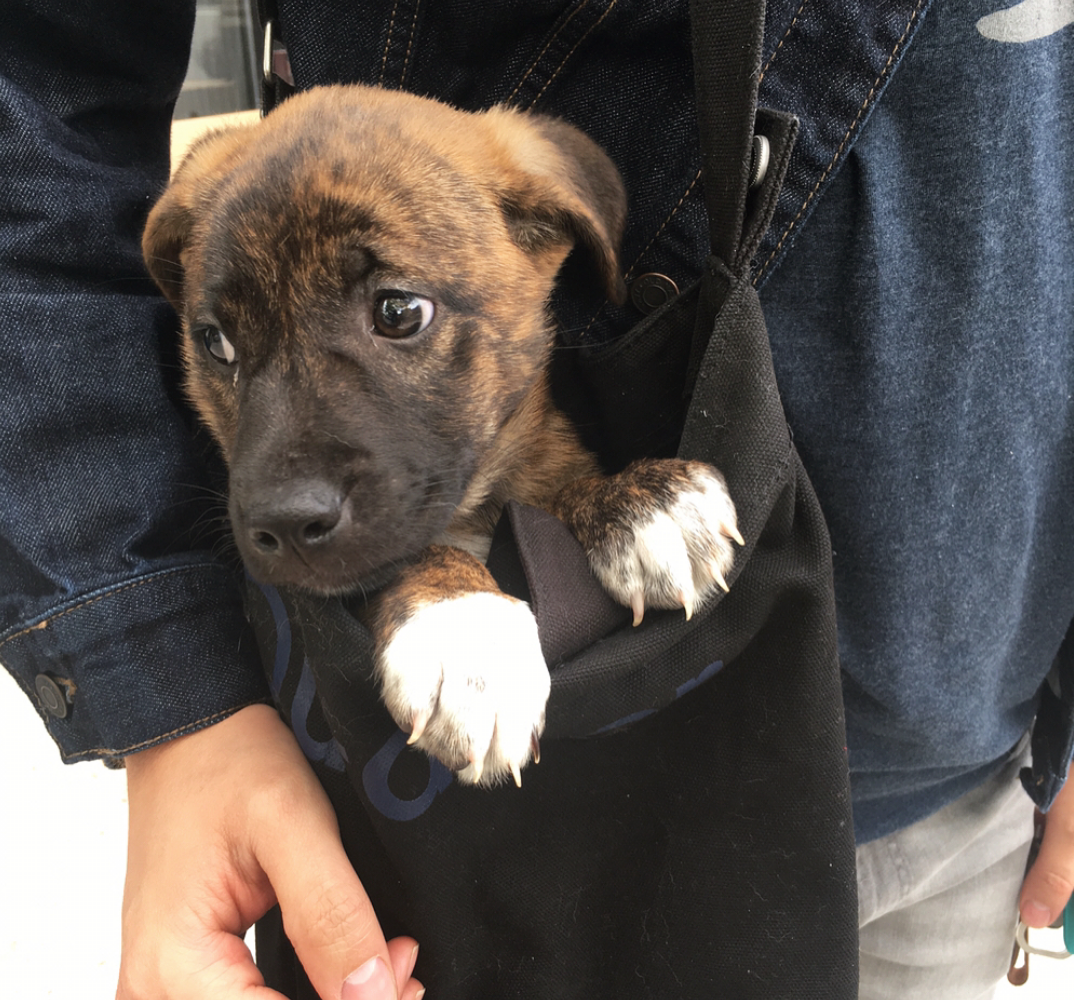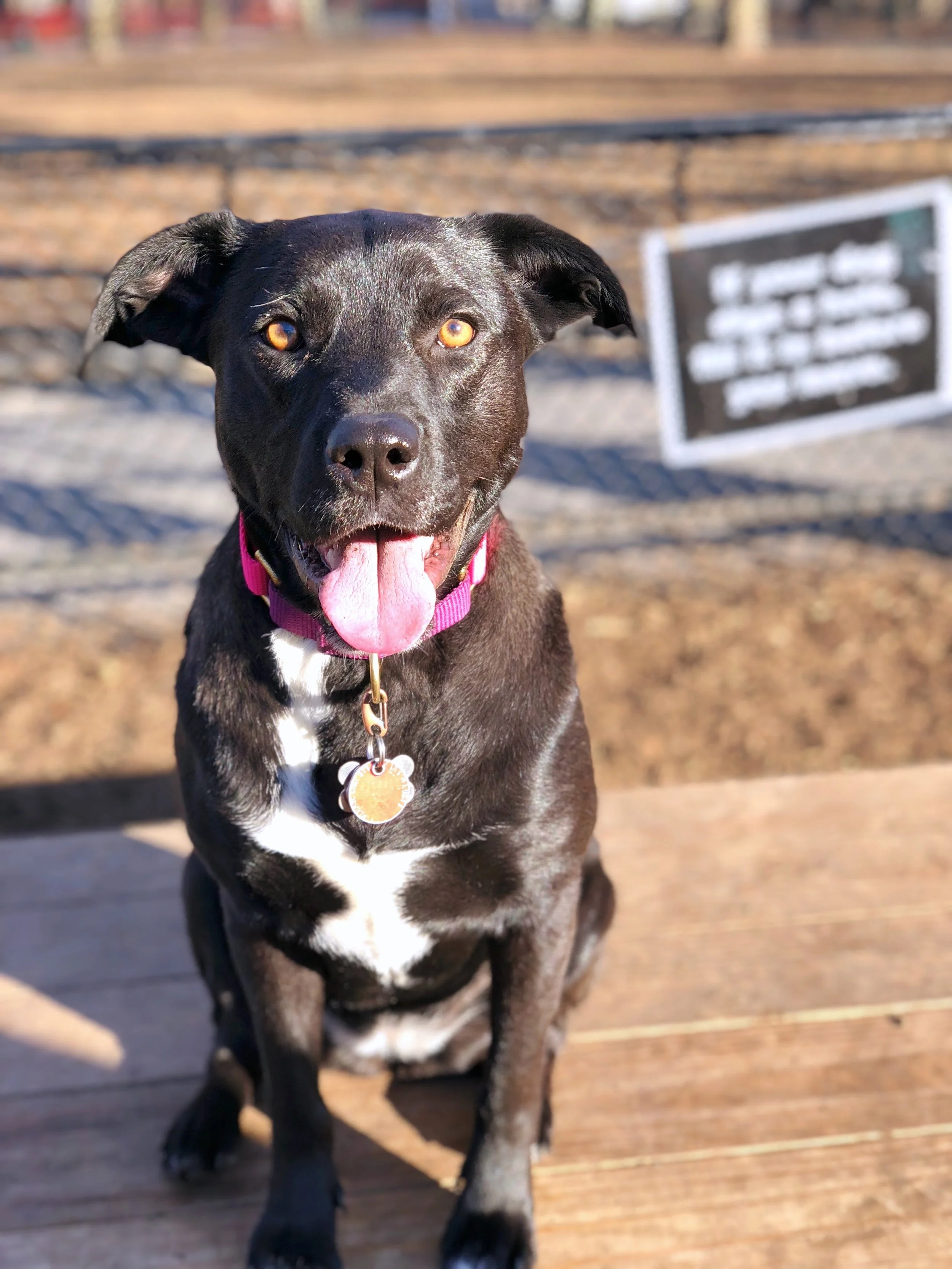What 13 Things Should I Know Before Fostering?

So you’re thinking about fostering a dog.
Congrats! Being a foster parent is one of the most rewarding choices we’ve ever made. One of the most common questions we get is “What is it like to foster? Is there anything I should know?” And the short answer is, YES.
When we fostered for the first time, we showed up at a random day care to pick up what we thought would be one teeny tiny puppy straight off a transfer. What we actually ended up bringing home were two massive 10-week old siblings. Within 30 seconds of placing them on our apartment floor, one pup was peeing down our AC vent and the other was pooping ON our coffee table. Our own dog looked at us like, “Are you guys serious? This?”.
Cooper was exhausted before the end of the first day with Rosie and Ella
We had no idea what we were getting ourselves into- and that’s no way to embark on your first foster journey. So, to help other future foster parents, here’s 13 tips and tricks we’ve learned along the way.
1. Research rescues near you, and find one you can trust and support.
Not all rescues are the same. First things first, figure out which one(s) you want to work with. Go to a couple adoption events to see how they run. Check out the rescue's Instagram, Facebook, and website and see how they talk about their dogs, where they come from, and what their adoption process is like. Are there success stories for their dogs? Do they frequently post about dogs in their care? Are there any alarming reviews on yelp or Facebook (take these with a grain of salt, but if there are 30 reviews and they’re all complaints or horror stories, something might be fishy). We've fostered with about 4 different rescues and are always adding others to our list.
Former foster Tequila
2. Ask what's expected from you as a foster.
Many rescues have a foster application or interview process to make sure you’re a good fit for them, but make sure you interview them a bit as well. Ask who handles adoptions (do they contact you, do you contact them?). Are there are regular adoption events? If so, are you required to get the dog to/from them? How long you are expected to foster if the dog does not get adopted? Be clear about any cut-off dates you may have. Does the rescue publicize the dog, or does the foster do most of the heavy lifting? How involved are fosters in the adoption process? Make sure you’re on board with what the rescue requires.
3. Ask how emergencies are handled - with the dog, or with you.
Make sure you know who to contact in case of emergency. What happens if you need to leave town for a family emergency? What is the rescue's protocol if your foster dog is showing signs of aggression or seems to be in pain? Where is the rescue’s emergency vet located? Are you responsible for transporting? What constitutes an emergency in the rescue’s eyes? If there’s any behavior or health issues you’re not willing to work through, be up front. It's important to know what your non-negotiable traits are.
Cooper and former foster Rose out for a walk with our dog walker
4. Foster the types of dogs that suit your lifestyle.
Even a temporary dog is a commitment. Be sure you’re prepared to make the adjustments to your lifestyle for your foster, especially if you don't have a dog of your own already. If you work 9-5 at an office that isn’t dog friendly, you’ll need to get a dog walker for a mid-day relief walk. Super young puppies have lots of energy, can’t be walked outside yet, and can’t be left home alone as long as most adults. Seniors can be more low maintenance but you might have them for a longer amount of time. If you have a resident dog, it's good to consider what kind of dogs they get along better with - do they tend to get in spats with a certain age or size do? Perhaps most importantly, make sure your building is dog friendly and be aware of any breed restrictions that may be in place.
Rita went right to our prepared playpen when she came home.
5. Be prepared. Really prepared.
Before your foster dog comes home, get their stuff in order. Set up their crate and/or playpen, have pee pads, toys, food, bully sticks etc ready to use so you’re not scrambling last minute. Give your foster dog’s info to your dog walker so there’s a smooth transition. Make sure you have what you need to transport the dog home and to events safely and legally (especially if you’re relying on NYC subway!). If you have a dog of your own, it might be wise to have a friend or roommate around to assist in introductions as well.
Cooper and Remy, best buds after slow intros.
6. Have a dog of your own? Take introductions slowly.
If you've never fostered, bringing home a brand new shell-shocked dog can be a rude awakening for your own pup! It's important to advocate for each dog's needs, and that means no free-for-alls! A structured and slow introduction sets both dogs up for success. For more information on how to do that, check out this article from our friends at Foster Dogs.
Nemo, who held his bladder for THREE DAYS when he came to foster with us.
7. Be patient. Give the pup time to settle.
Many times, these dogs are coming from a very hectic environment and can be a little out of sorts the first few days they're with you. Decompression is so important. Keep your foster dog in a small, gated area to get used to your home at first - not free reign of the whole house and furniture. A safe, cozy crate and slowly letting them explore and acclimate will help them relax and settle. Be patient with them. We’ve had dogs not pee or poop for almost 72 hours after coming to our home because they were so nervous in their new environment! And on the flip side, dogs that were well house trained have had accidents the first few days, and never again after. A dog’s behavior the first few days may not be indicative of their true personality.
8. Crate. Crate. Crate. Did we mention crate?
Trust me, you’ll thank yourself later. Crating helps prevent accidents, destroyed furniture, and potentially an injured dog. Stock up on long-lasting chews like frozen peanut butter Kongs, bully sticks, and yak sticks. Never use the crate as punishment, and make sure all the best thing happen in the crate (all mealtimes, tasty snacks, etc). Cover it with a sheet and make it nice and cozy. Check out this article for more information crating your foster!
9. Have a routine, and stick to it.
One of the biggest keys to success with a foster dog is being consistent, and having a routine. We try to make sure walk and feeding schedules are the same every day-even weekends. Our mornings start breakfast followed by a long walk and play time. Dog walker comes between 12-3 so there are no potty accidents. When we get home from work, the pups go out again for relief and get dinner, followed by some play time or a long walk. Right before bed, pups go out again. This helps with house training and overall peace of mind at home Exercise is factored into our day so that pups are tired and happy.
Cooper and Rita hanging out in Place
10. Basic training will help you, and the pup.
How you want to handle your foster dog is really up to you, so this is a bit optional.You can see it as a hotel stay, or as a pre-adoption boot camp, or somewhere in the middle. Our fosters are treated like a client of Camp Cooper- and they're not exempt from our rules. We try to set them up for success in their new homes by instilling good habits and behavior early on. This starts with "sit", "place", house training and leash manners, along with general household behavior. For example, dinner time? The pup has to sit and wait for their food just like Cooper. Jumping on the couch? We try to have the pup be invited up to avoid pouncing all over people. Practicing good behavior not only helps you bond with your foster, it helps them get adopted quickly. A house-trained dog who walks well on a leash is a huge plus at an adoption event!
Taking photos of Rita to help her get adopted.
11. Take great photos of your foster.
And post those photos with the pup's and rescue's information EVERYWHERE. Send them to your rescue for your dog's adoption profile. Post them on Instagram, Facebook, the fridge at work. Anywhere you can.
Nemo in his Adopt Me harness
12. Network your dog as much as you can.
You never know who's looking to adopt a dog. We try to bring our fosters everywhere we can (if they're comfortable in social settings), and cover them in Adopt Me swag so everyone knows they're available. Many applications for dogs we've gotten have come from people who stopped us on the street to pet " that cute dog!". Make sure to share information about the dog and their rescue with anyone who even "Awwww"s at them. We post on social media relentlessly to try and have our pups come up in searches as much as possible.
Rosie, headed home!
13. Remember Goodbye is the Goal.
This is the hard part. Be prepared to help your pup go on to their forever home- that’s the goal after all! If your rescue does meet and greets with the foster, ask lots of questions of potential adopters. Make sure you get a good vibe from the applicant, and take a back seat- let them interact with the dog and begin to build a relationship. If at any point you think you might be interested in adopting your foster, contact your rescue immediately! Some rescues offer foster-to-adopt, but many are first come first serve, so don't delay too long.
We feel so lucky we've been able to foster, and will continue to do it as long as we can. If you have any questions about fostering, please don't hesitate to reach out to us any time!















